Most current high-end smartphones come with multi-camera arrays that typically include a super-wide-angle and a tele camera next to the primary wide-angle module. Some devices also feature macro or specific video cameras. In addition, most camera arrays include a variety of sensors — for example, time-of-flight sensors for depth and distance measuring, and color sensors, as well as an LED flash. To protect all these fairly fragile optical and electronic components from dirt, knocks, or the weather, the entire camera array is usually sealed by a protective cover made from either sapphire or glass.
This cover has to protect the camera modules behind it from impacts and therefore has to be strong, durable, and easy to clean. On the other hand, it also needs to be extremely thin in order to keep the device as slender as possible and to optimize light transmission to the camera lenses. This piece of glass may look pretty insignificant, but it can have an important impact on camera image quality if not optimized or if damaged.
Even the strongest protective glass cover can end up being scratched in daily use. To find out exactly how much of an impact a damaged camera cover has on image quality, we conducted an experiment and ran our usual DXOMARK Camera test protocol on two smartphones of the same model: one with a camera cover in perfect condition, the other intentionally scratched by professionals for this test. You can see the extent of the damage on the latter in the image at the top of this article.
We performed the same image quality tests for this comparison as we do when we evaluate any smartphone camera.
Among other issues, we obviously expected that the scratches would cause lens flare and similar effects. Flare is a lens artifact caused by stray light and internal reflections in the camera module. It can be exacerbated by a variety of factors, including scratches, dust or dirt on the lens, the lack of anti-reflective coating, and/or bad lens alignment. It’s also more common on wide-angle lenses because they are more likely to have the sun within or near the angle of view than longer lenses.
Flare usually appears in the shape of a haze effect (ghosting flare), or as starbursts or rings spread across the scene. In the DXOMARK Camera test protocol, we analyze images for flare as part of the artifacts test category, with the presence of flare reducing a camera’s artifacts sub-score.
Read on to see the results and find out what impact a damaged camera cover has on image quality.
Primary camera
Since we are comparing devices with identical hardware (optical module and sensor) and software, it’s not a surprise that many image quality attributes, such as autofocus, texture, noise, and white balance remain the same on the scratched phone.
However, skin tone rendition, contrast, and exposure can all suffer, especially in difficult lighting situations, such as low-light or backlit scenes.
In this evenly-lit portrait shot, you can see that there is no strong difference in terms of texture and noise between the two devices.
Equally, in landscape shots with the light source behind the camera, such as the one below, white balance and color in general tend to be pretty much identical. The same is true for exposure.
However, the impact of the damaged camera cover becomes more obvious in more difficult lighting situations, such as high-contrast and/or backlit scenes. Some flare is visible in both of these portrait images. In the image captured with the scratched device on the left, the subjects’ faces show very low contrast and skin tones are desaturated, especially on the person on the left.
Flare is the most obvious problem, though, and it is visible in many different scenes, as in the dark roof areas above the window opening in the left-hand image below.
In indoor shots, strong flare is often noticeable around light sources, such as the LED lights in the scene below. As in the above example, some glare can be seen around the light source, but what’s interesting here is the presence of stray lights, particularly their direction and shape. As we can see in the cover glass picture that introduced this article, the strongest scratches go in one direction. The stray lights in the sample below follow the perpendicular direction of the scratches on the phone, and indeed the root cause of these stray lights is light diffraction from those scratches.
The same effects are even more visible in night shots such as the one below; moreover, the glare around light sources is stronger with the damaged glass cover. We can also see that the stray light in this landscape shot follows the same axis as in the portrait orientation image above. In addition, the image on the left shows a lack of detail and shadow clipping in the dark parts of the scene. And here again, the sky is also noticeably darker as a result of flare impacting local contrast.
Now let’s see how these real-life effects translate into our flare measurements. Using our DXOMARK Analyzer Flare setup, an external light source scans the camera along three axes: horizontal, vertical, and diagonal. Our lab results are displayed below, and as expected, the scratches cause a local loss of contrast.
We use the DXOMARK flare setup in the dark, with the only light coming from the external light source. With a theoretically perfect camera design, as long as the light source is outside of the lens’s field of view, no light should be visible to the sensor. In the flare attenuation map below, the light source is near the bottom-left corner and is still out of the field of view. However, unlike for the intact smartphone, you can see some strong veiling glare (represented in blue color) on the damaged smartphone.
Note: The DXOMARK flare measurement computes what we call “flare attenuation,” which is a ratio (in dB) between light source illuminance when positioned in the center of the picture, and flare illuminance. The higher flare attenuation, the less flare there is.
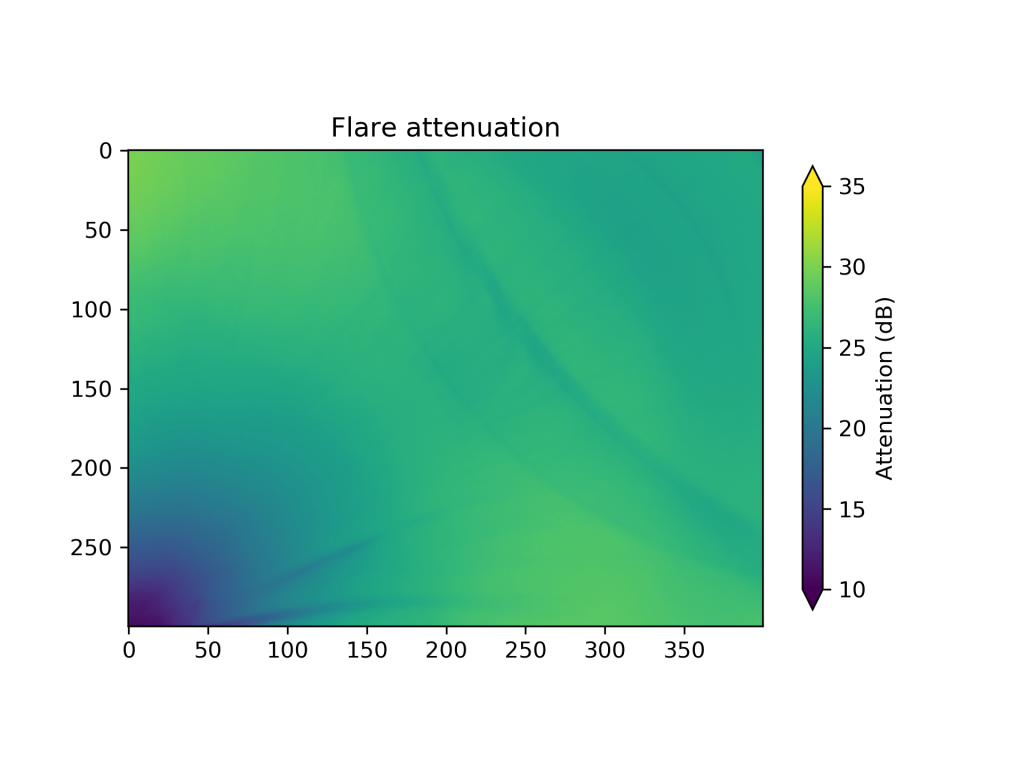
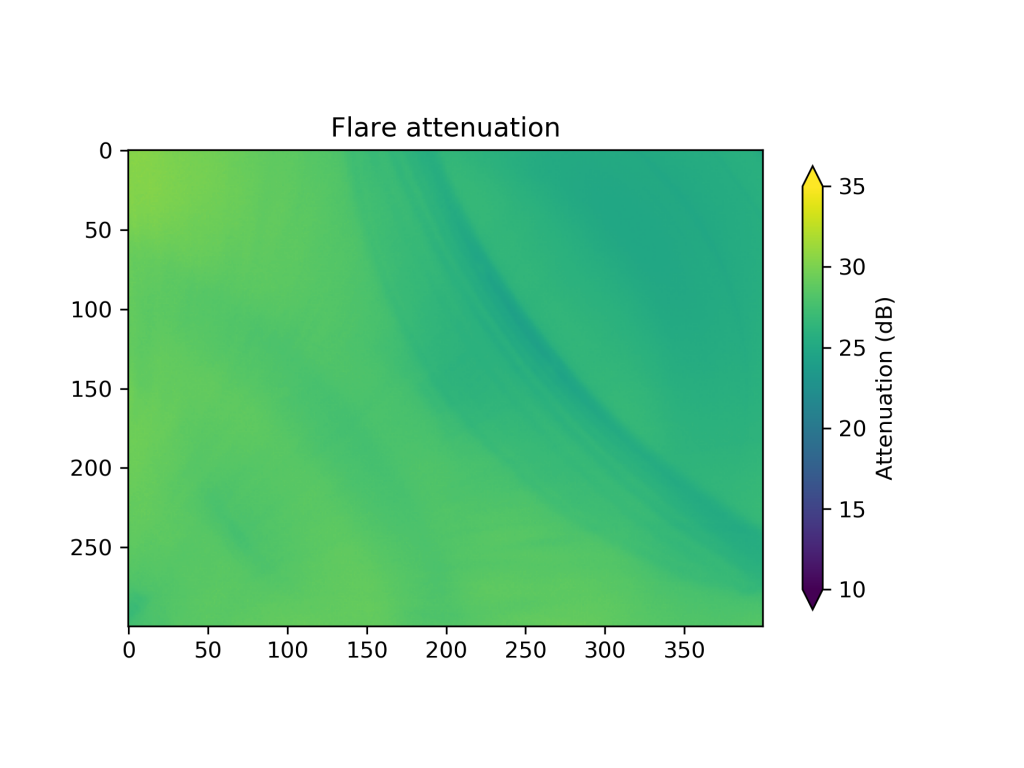
Even in the worst cases, such as displayed in the graphs above, the intact camera controls flare attenuation much better than the damaged camera. In natural scenes such as the ones below, a loss of contrast will often occur, and it will be all the more disturbing when a face is near the impacted area. In some cases this can be so bad that face detection fails to kick in, which means that image processing won’t be optimized for a portrait subject.
We can see this effect perceptually in the backlit image we showed previously: the loss of contrast in the top left corner of the picture is indeed more visible on the damaged device, while the flare veiling in the bottom right corner is quite similar between both devices.
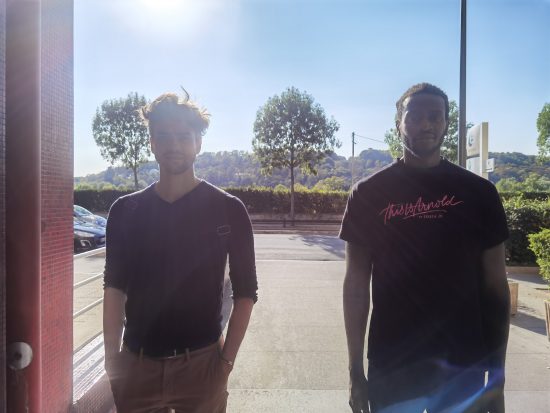
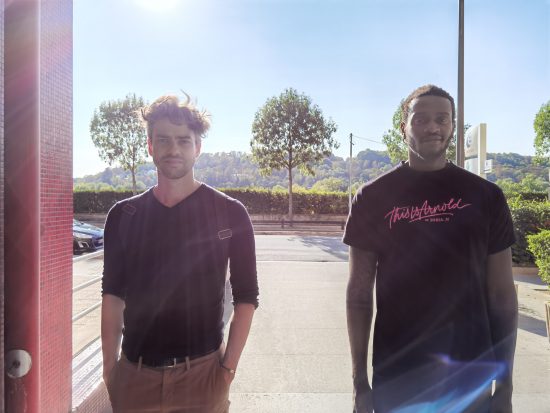
In the following graph, we computed flare attenuation depending on the external light source position, 0° being when the light source is in the center of the picture. For each lighting position, we compute the mean flare attenuation value for the whole picture and the worst flare attenuation value. We focused mainly on the cases when the light source was out of the field of view. We can observe that on average, flare attenuation remains similar on both phones, though it is slightly worse on the damaged smartphone. However, the worst flare attenuation on the damaged smartphone is significantly different compared to the intact one and this difference becomes all the more visible when the lighting source gets closer to the field of view.
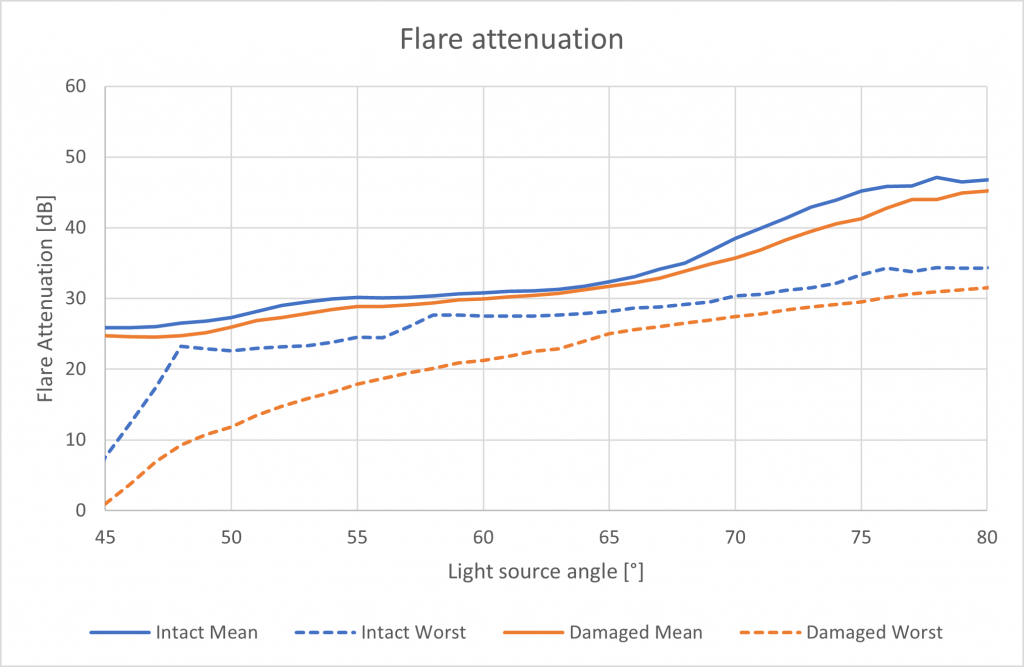
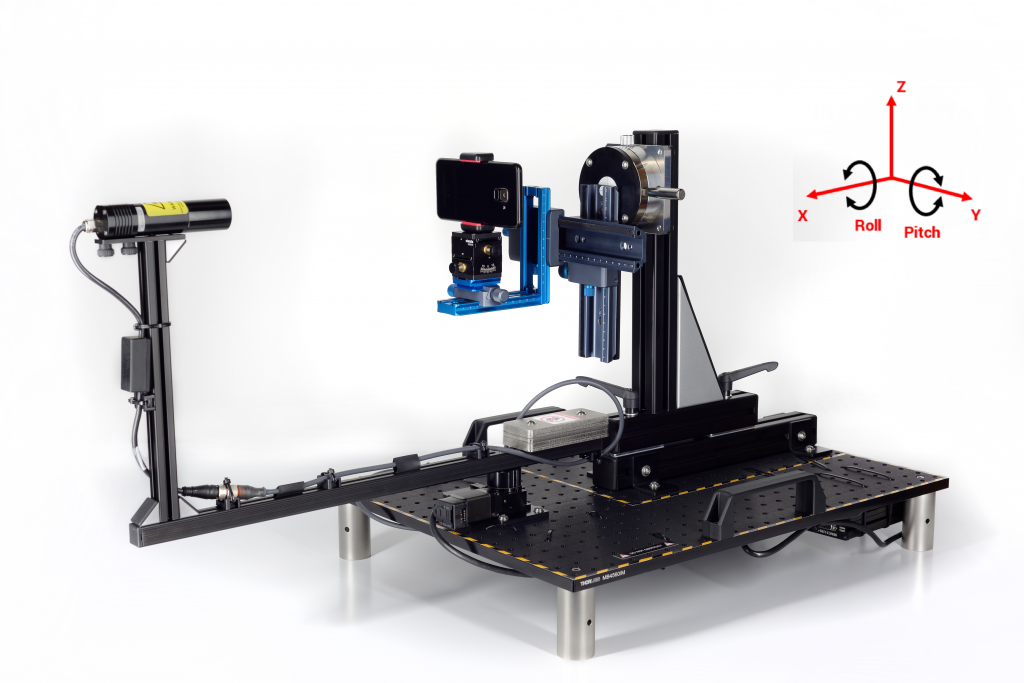
Wide and tele cameras and bokeh mode
We captured all the comparison images above on each P40 Pro’s primary camera, but we see pretty much the same effects in special modes and when using the ultra-wide and tele cameras, or when shooting videos using the main module.
In bokeh mode, the scratched camera cover has no impact on the camera’s depth-sensing abilities or on the bokeh rendition in general. However, bokeh mode images show the same flare and contrast issues we have seen in portrait shots captured in standard mode.
Results are very similar to those of the primary camera when shooting with the ultra-wide camera module: we see stronger flare and lower contrast on the scratched phone than on the undamaged device.
This 90 mm tele-portrait shows the same skin tone desaturation and low contrast on the face as we’ve seen in backlit portraits captured with the main camera. However, with the subject occupying a larger portion of the frame, the effect is more pronounced.
Video
Video clips recorded on the damaged device show the same artifacts and imperfections as still images, but flare around light sources and stray light become even more intrusive when panning or moving the camera in some other way. On the plus side, autofocus as well as texture and noise results are not usually affected by the scratches on the camera cover.
Lens flare is the main issue
Looking at the image results above, it’s fair to say that many image quality attributes are not affected by even a heavily scratched camera cover. For example, target exposure in landscape images is the same on both scratched and undamaged devices. The scratches don’t reduce image detail or increase noise either, and they don’t have an impact on the autofocus system or on depth sensing and bokeh rendering in bokeh simulation mode.
However, as our test result show, scratches do cause and/or amplify lens flare and similar effects, and can make them very intrusive, especially when shooting backlit scenes or with lateral lighting. As we have seen on the image samples above, damages on the camera cover can significantly impact image quality, and this would consequently be reflected in our scores. Based on these first tests, our sub-scores for Photo, Zoom, and Video would each be impacted negatively by about 5 to 10 points depending on the severity of the damage, and mainly because of the impact of flare on exposure, color, and optical artifacts.
Flare is easily detected using perceptual testing methods, but DXOMARK has also developed a method for objectively measuring flare. Our experts use a custom-built rig to place the device under test into a controlled position and to move a light source so that light hits the lens from all directions and angles. Watch this video for more information:
It’s also worth pointing out that if you notice a similar local loss of contrast on your smartphone images without seeing any apparent scratches, the effect may well be caused by a dirty cover, which can have a very similar impact on image quality as scratches. The image below on the right was shot with fingerprint smears on the camera cover.
As you can see, the results from a dirty glass cover are very similar to those of the camera with the scratched cover. The important difference is that fingerprints can be easily removed, depending on the camera cover material. So as a final word, we strongly advise you to keep your smartphone camera clean, and most of all, to keep it well protected from scratches in your everyday use.


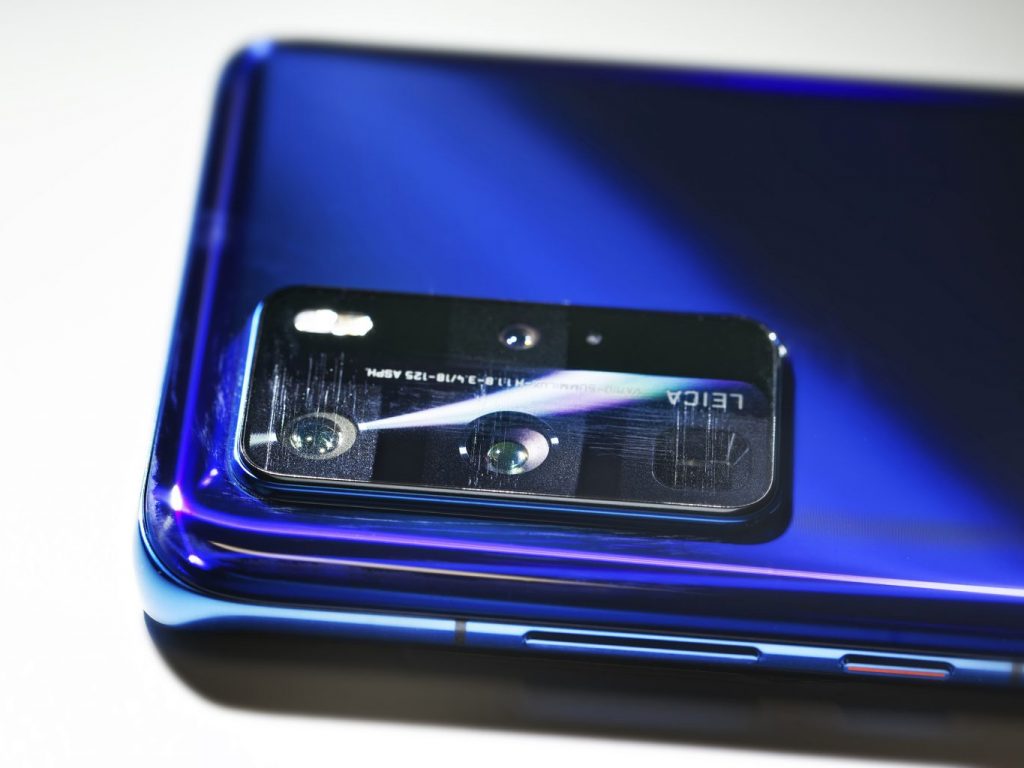
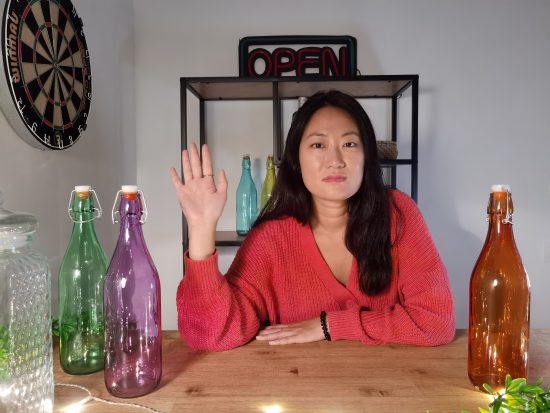

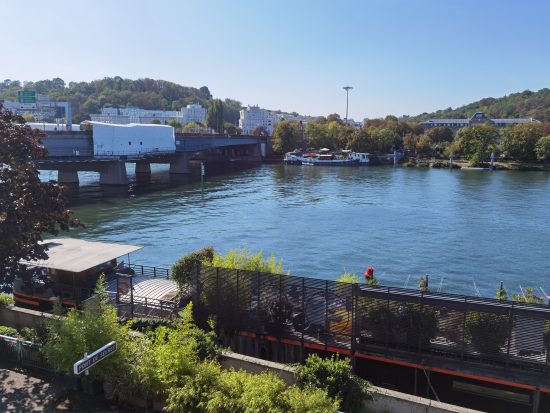
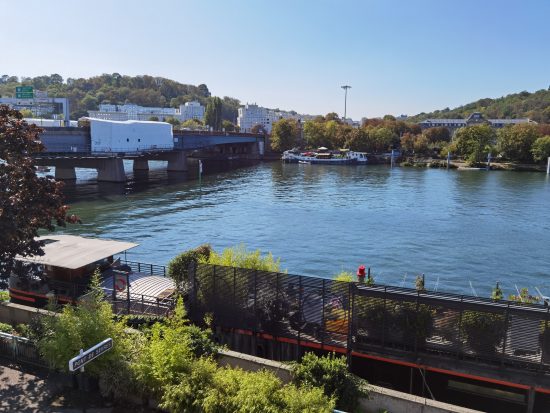
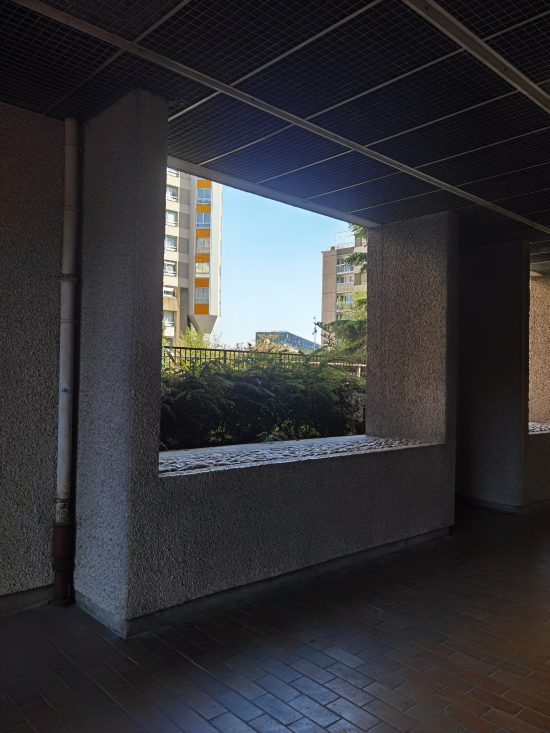
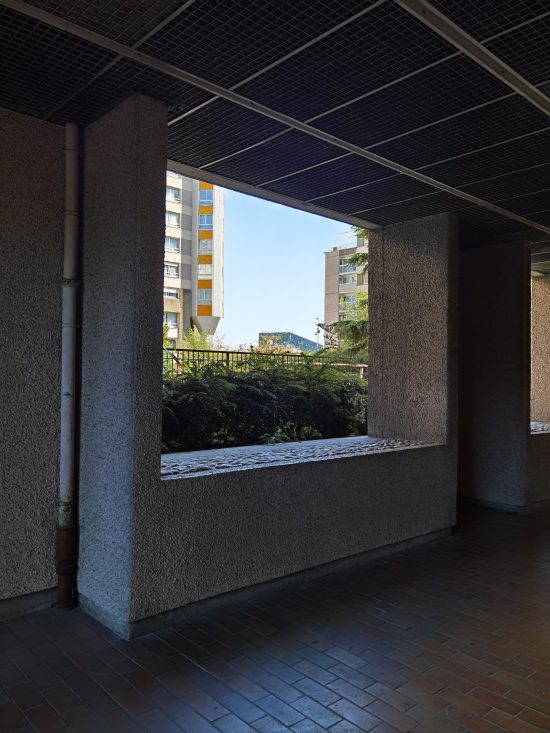
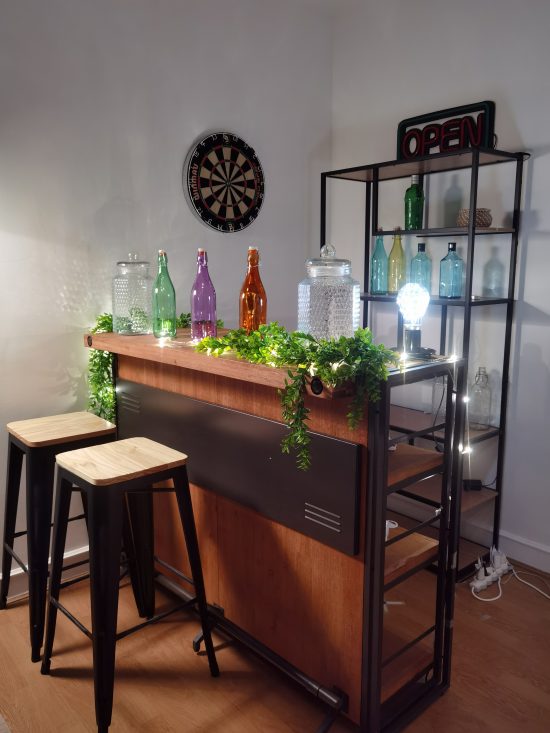
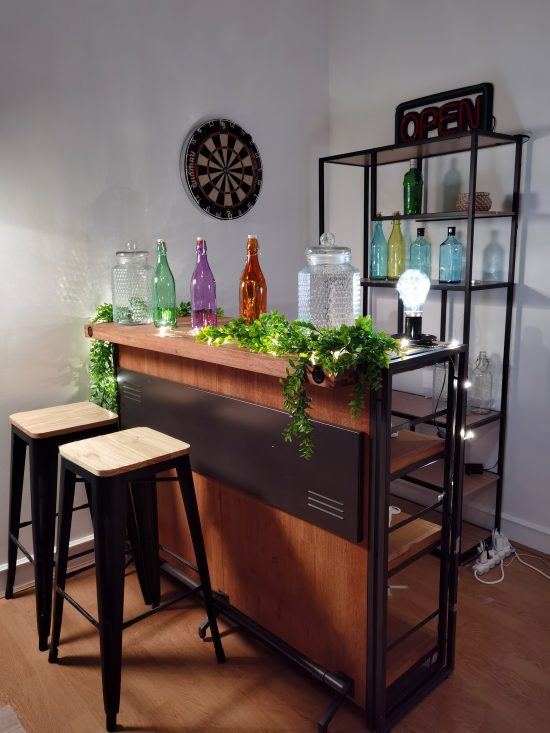
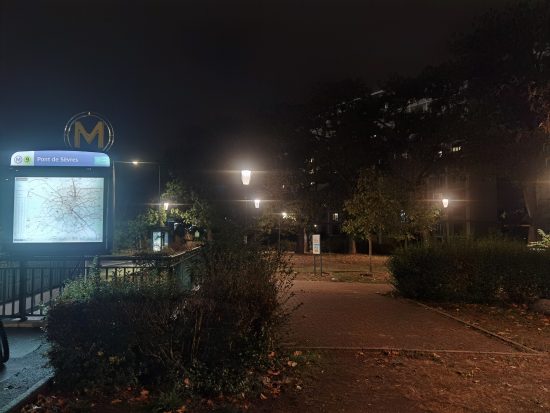
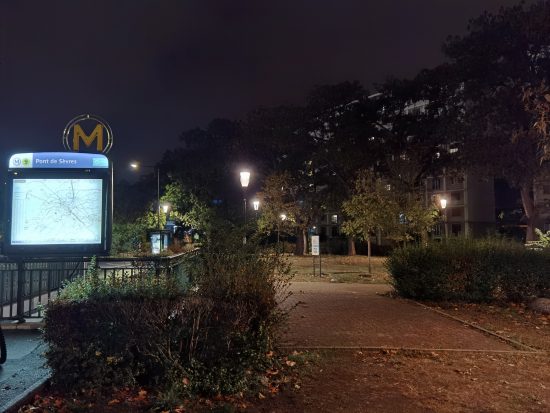
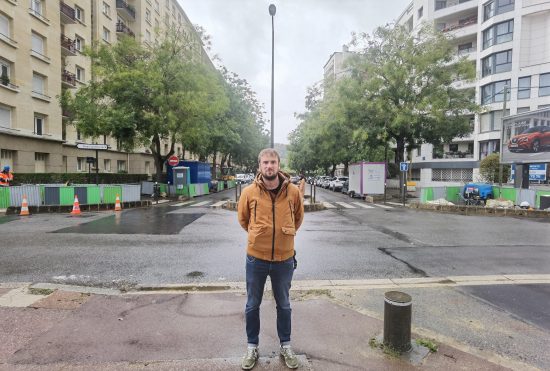
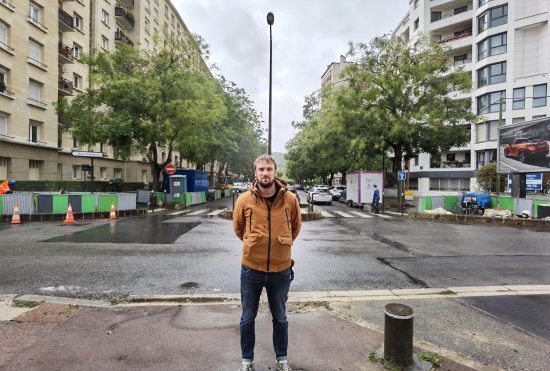
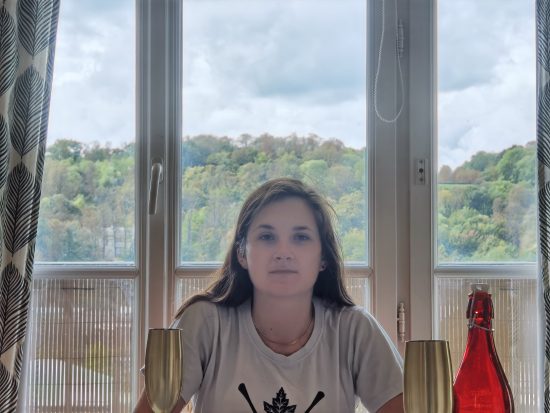
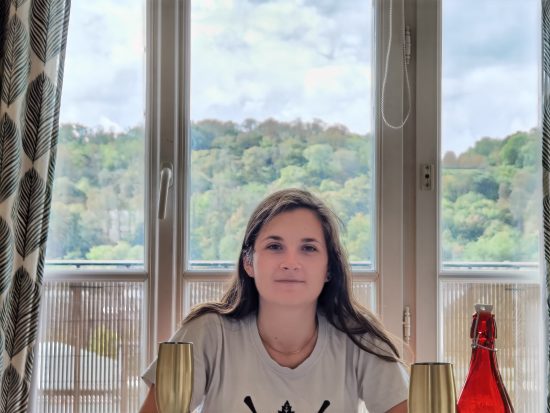
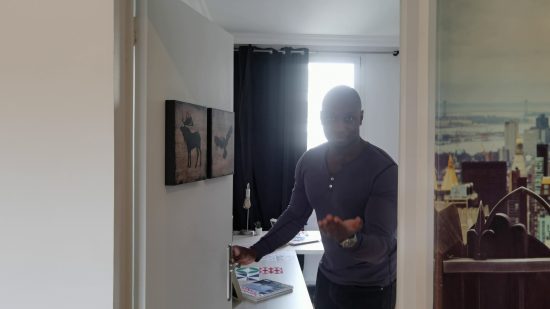
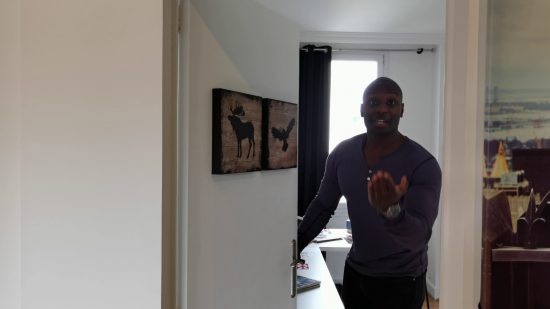



DXOMARK encourages its readers to share comments on the articles. To read or post comments, Disqus cookies are required. Change your Cookies Preferences and read more about our Comment Policy.